Climate Detectives Projects 2022-2023
Project title: The wonder of pollination
Team: Bee friends
Via Fiuggi, 14 Pomigliano d’Arco Italy 23 Student’s age: 14-15 years old, 16-17 years old
Why is food in danger on our tables?
Perché sulle nostre tavole il cibo è in pericolo?

Bees and pollinators are fast disappearing due to air pollution and unsustainable agriculture. The consequences are and will be tragic for humanity. We do not only get honey from bees, but if we take a closer look at the entire food world, we will see that this is highly dependent on the presence of this insect. In collaboration with a beekeeper in our area, the pupils learned more about the behaviour of bees and the benefits they bring to the environment and first and foremost to agriculture, including by studying data on their presence. The study was of particular interest to the team class but also involved other classes that addressed the issue of bee conservation in a cross-curricular way.
Le api e gli impollinatori stanno scomparendo velocemente a causa dell’inquinamento dell’aria e dell’agricoltura insostenibile. Le conseguenze sono e saranno tragiche per l’umanità. Dalle api non ricaviamo solo il miele ma se analizziamo approfonditamente l’intero mondo dell’alimentazione vedremo che questo dipende fortemente dalla presenza di questo insetto. In collaborazione con un apicoltore presente sul nostro territorio, gli alunni hanno imparato di più sul comportamento delle api e dei benefici che portano all’ambiente ed in primis all’agricoltura, anche attraverso lo studio dei dati riguardanti la loro presenza. Lo studio ha interessato in particolare la classe team ma ha coinvolto anche altre classi che hanno affrontato il tema della salvaguardia delle api in modo trasversale.

A statistical analysis of the effect of pollination on fruit quality was carried out after participating in a webinar with Dr Angeli from MUSE in Trento who discussed the use of pesticides in agriculture.
The pupils drew a correlation between the diameter of an annurca apple, typical of our region, and the number of seeds inside: the larger the diameter, the larger the apple. In the study of the correlation, the pupils were confronted with Dr Enrico Caleprico of ISTAT.
E’ stata condotta un’analisi statistica riguardante l’ effetto dell’impollinazione sulla qualità della frutta dopo aver partecipato ad un webinar con il dott. Angeli del MUSE di Trento che ha approfondito il tema legato all’uso dei pesticidi in agricoltura.
Gli alunni hanno ricavato una correlazione tra il diametro di una mela annurca, tipica del nostro territorio, e il numero di semi all’interno: più grande è il diametro e più grande è la mela. Nello studio della correlazione gli alunni si sono confrontati con il dott.Enrico Caleprico dell’ISTAT.

Possible solutions to safeguard bees and other pollinators are the creation of shelters to be placed on the chestnut or lime trees in the Water Park adjacent to our school. The shelters have been built and handed over to the beekeeper who will place them in the park in May.
Soluzioni possibili per salvaguardare le api e gli altri impollinatori sono la creazione di rifugi da posizionare sugli alberi di castagno o tigli presenti nel Parco delle Acque adiacente la nostra scuola. I rifugi sono stati costruiti e consegnati all’apicoltore che provvederà a posizionarli nel parco nel mese di maggio.
https://matteoquaranta.wixsite.com/website
This project was automatically translated into English.
Projects are created by the teams and they take the full responsibility of the shared data.
← All projects







